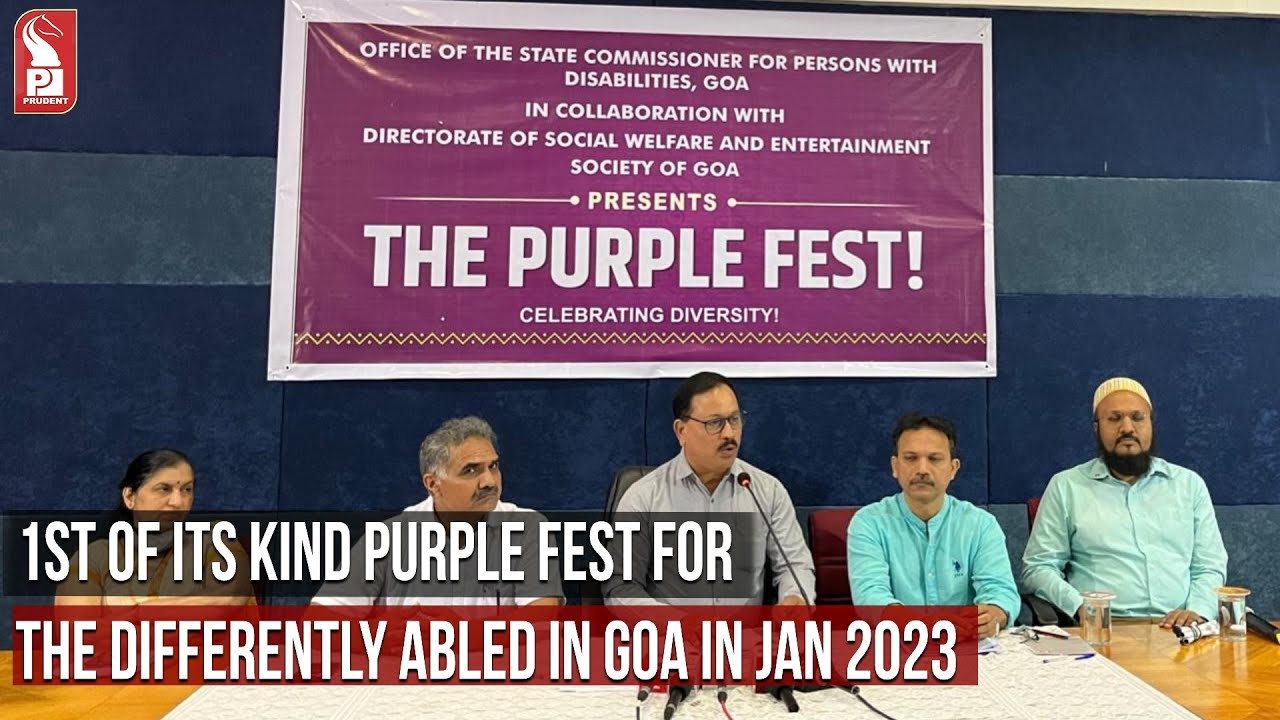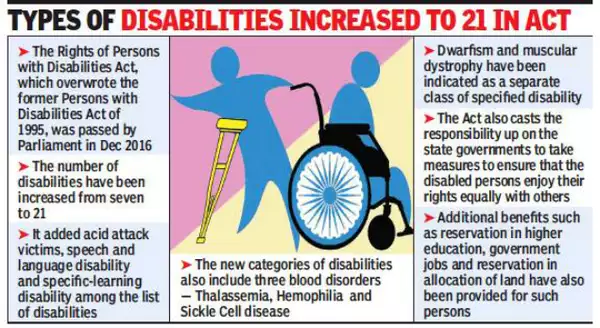Description

Copyright infringement not intended
About
- The state of Goa is hosting the Purple Fest, the first-ever inclusive festival in the state for persons with disabilities (PwDs).
- The festival started in Panjim on 6th January 2023 and will end on 8th January.
- The festival aims to show how to bring inclusivity in our society, and how to support one another.
- Thousands of entries have attended the festival, and delegates from all over the country participated in the festival.
- Recently the Ministry of Social Justice and Empowerment Ministry has released a new draft of national policy on Persons with disabilities (PwD).
- The draft stated that the current national programme on the prevention of disabilities focused only on “traditional causes”, and was silent on other factors like malnourishment, medical negligence, socio-cultural factors and impairment caused by disasters.
Persons with Disabilities in India
- About 2.2% of India’s population lives with some kind of physical or mental disability, as per the National Statistics Office (NSO) report.
- Rural men had the highest prevalence of disability in India, according to the NSO report.
- A higher proportion of men were disabled in India compared with women, and disability was more prevalent in rural areas than in urban areas.
- The inability to move without assistance was the most common disability. More men experienced locomotors disability than women.
- The 2011 census estimated that the number of people with disabilities in India is close to 2.68 crores (or 2.2% of the population) — that is more than the entire population of Australia.
- This number was based on the older definition of disability, yet the proportion of disabled people in the population is not different from the 2019 NSO report, which used the expanded definition of disability.
- However, the 2019 edition of disability statistics reported a slightly higher prevalence than those reported in earlier editions of the survey.
- A 2019 study by the Public Health Foundation of India found that the use of the Annual Health Survey’s metrics results in a lower prevalence.
- Like other disadvantaged groups, the disabled in India are entitled to some benefits, ranging from reservations in educational institutes to concessions on railway tickets.
- To claim these benefits, they have to furnish certificates as proof of disability.
- At the macro level, data on the prevalence and type of disability is useful while making allocations for welfare schemes.
- This list of disabilities was expanded to 21 when the Rights of People with Disabilities were introduced in 2016.
.jpeg)
Rights of Persons with Disabilities Act, 2016
- The Act replaced the Persons with Disabilities Act of 1995.
- India is a signatory of the United National Convention on the Rights of Persons with Disabilities (UNCRPD). The act fulfils the commitment made by India at UNCRPD.
- Under the Act, the types of disabilities have been increased from the existing 7 to 21 and it authorized the Central Government to add more types of disabilities.
- The 21 disabilities are;
- Blindness
- Low-vision
- Leprosy Cured persons
- Hearing Impairment (deaf and hard of hearing)
- Locomotors Disability
- Dwarfism
- Intellectual Disability
- Mental Illness
- Autism Spectrum Disorder
- Cerebral Palsy
- Muscular Dystrophy
- Chronic Neurological conditions
- Specific Learning Disabilities
- Multiple Sclerosis
- Speech and Language disability
- Thalassemia
- Haemophilia
- Sickle Cell Disease
- Multiple Disabilities including deaf, and blindness.
- Acid Attack victim
- Parkinson's disease
- First-time Speech and Language Disabilities and Specific Learning disabilities have been added to the list.
- Acid Attack Victims and Dwarfism are also included in the list of disabilities.
- The list of disabilities also included three blood disorders;
- Thalassemia
- Haemophilia
- Sickle Cell Disease
- Directed the governments to ensure that persons with disabilities enjoy their rights equally with others.
- Persons with benchmark disabilities and those with high support will get additional benefits such as reservations in higher education, government jobs, poverty alleviation schemes etc.
- Every child between the age group of 6 and 18 years with the benchmark disability shall have the right to free education.
- Ensure their accessibility in public buildings (both Government and private).
- Reservation in Public vacancies has been increased from 3% to 4% for persons with benchmark disabilities.
- Central and State Advisory Boards on Disability serve as the highest policy-making bodies at the Central and State level.
- District-level committees by the State Governments to address local concerns of PwDs.
- National and State Funds to provide financial support to persons with disabilities.
- Strict Punishments and Penalties for offences committed against persons with disabilities.
- Special Courts in each district to take cases regarding violation of rights of PwDs.
- The Act provided an effective tool for ensuring their empowerment and true inclusion into mainstream society in an acceptable manner.

In 2015, the Union Government launched the Accessible India Campaign (AIC), also known as Sugamya Bharat Abhiyan, under the Department of Empowerment of Persons with Disabilities (Divyangjan), Ministry of Social Justice & Empowerment.
- It aims at enhancing accessibility, creating awareness and sensitization for the creation of a universal barrier-free environment for the disabled.
- Its 3 main pillars are;
- Built-Up Environment
- Transportation System
- Information & Communication (ICT) ecosystems
- The achievements of AIC are:
- 1630 Government buildings have been provided with features of accessibility.
- 35 International Airports and 55 Domestic Airports have been provided with features of accessibility.
- Nearly 627 Central and State/UT government websites have been made accessible.
- Nearly 71% of government and government-aided schools have been made barrier-free with the provision of ramps, handrails and accessible toilets
.jpeg)
https://pib.gov.in/PressReleseDetail.aspx?PRID=1888942







.jpeg)







